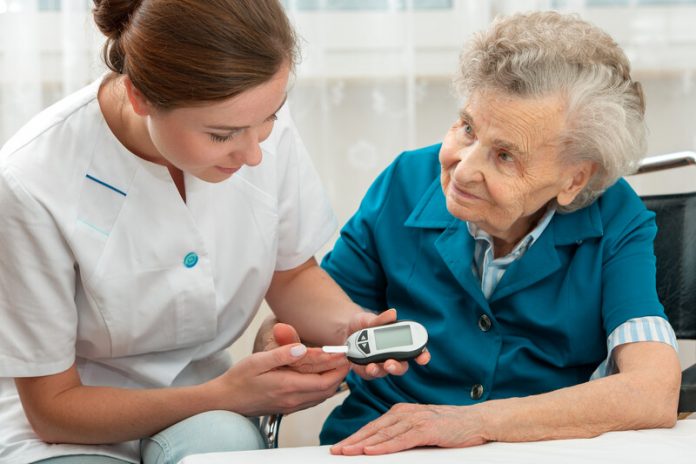Did you know that more than 30 million Americans are living with diabetes today – and a quarter of them don’t even know it? According to the Centers for Disease Control and Prevention, diabetes is the seventh leading cause of death in the United States and is on the rise. Over the last 20 years the number of adults with diabetes has doubled and currently, over one third of American adults – 84 million – have prediabetes, the dangerous precursor to the full-blown disease.
Older people in particular are at a higher risk of developing diabetes – and the frailty and disability it causes – because they don’t necessarily need to have the same risks as younger people in order to develop the disease. For example, obesity is the number one risk factor of developing diabetes for the average person, however older people can still experience a decrease in natural insulin secretion and increase in insulin resistance without being obese or even overweight.
How diabetes affects older adults
According to an article published by the Lancet, it can be more difficult to diagnose diabetes in older adults because they often do not experience the same common symptoms that younger people do. For example, diabetes in seniors can present as urinary incontinence, falls, and cognitive or behavioral disturbances including depression and delirium. In fact, many seniors present at urgent care centres and hospitals experiencing a variety of symptoms that seem to have nothing to do with diabetes. This is why it is so important to be proactive in discussing risk factors for seniors with your health care provider and screening for diabetes, even in the absence of ‘common’ signs and symptoms.
Compared to younger diabetics, older people with diabetes are at a higher risk of developing simultaneous chronic diseases such as ischaemic heart disease, peripheral artery disease, stroke, heart failure, and chronic kidney disease. These complications can have devastating impacts on a persons’ overall health, independence and quality of life.
New treatment options
Traditional treatments for diabetes are often not ideal for elderly, frail seniors for several reasons:
- They are dangerous. Older diabetics are at risk of experiencing toxic effects of medication due to reduced kidney and liver function. With advanced age, these vital organs are simply not up to processing and breaking down the highly potent medication.
- The risks outweigh the benefits. Intensive glucose-lowering treatments have been proven to be slightly useful in older adults, however the high risk of negative side affects generally outweigh the benefits.
This is not to say that traditional treatments are never effective and should not be trialed; rather, they require an individualized treatment plan and should be used with strict surveillance and caution.
While traditional treatments are not the best option for seniors, there are exciting new treatment models on the horizon for older adults with diabetes. The MID-Frail Study is currently analyzing a ‘multimodal intervention’ that supports patients with a three-tiered approach:
- Adjustment of clinical targets to those suitable for older populations
- An exercise program based on strength exercise
- An educational programme designed to avoid malnutrition and hypoglycaemia
According to the Lancet, this is “the first major study to focus on the effects of treatment on functional outcomes in diabetes” for people older than 70 years of age. Although we may not have all the answers yet, there is definite progress being made to support older adults suffering with diabetes.

























